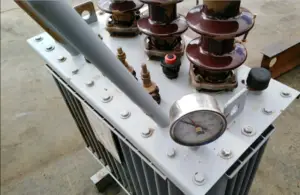Transformers are essential electrical devices used to transfer electrical energy from one circuit to another through electromagnetic induction. They are found in power plants, transmission and distribution systems, and various industrial applications.
Due to their critical role in power systems, it is crucial to ensure that transformers operate within their temperature limits.
If a transformer overheats, it can result in equipment failure, damage, and even electrical fires.
In this article, we will discuss how to cool down a hot transformer and the best cooling methods for transformers.
How to Cool Down a Hot Transformer?
Transformers can overheat due to various reasons, such as overloading, poor ventilation, and high ambient temperatures.
When a transformer exceeds its temperature limit, it needs to be cooled down promptly to prevent damage. Here are the steps to cool down a hot transformer:
- Identify the problem: The first step in cooling down a hot transformer is to identify the cause of the problem. This can be done by monitoring the transformer’s temperature using a thermometer or an infrared camera. Once the cause of the problem is identified, appropriate action can be taken.
- Reduce the load: If the transformer is overheating due to overloading, reducing the load can help cool it down. This can be done by shutting down some of the equipment connected to the transformer or rerouting the load to another transformer.
- Improve ventilation: Transformers require adequate ventilation to dissipate the heat they generate. If the transformer is not properly ventilated, it can overheat. Improving ventilation can involve installing fans, increasing the number of cooling ducts, or even relocating the transformer to a better location.
- Cool the transformer: Cooling the transformer can be done through various methods, including:
- Water cooling: Water is circulated through tubes in the transformer to cool it down. This method is effective but requires additional equipment and maintenance.
- Forced-air cooling: Air is blown over the transformer using fans or blowers. This method is relatively simple and effective for small transformers.
- Natural air cooling: Transformers can be designed to cool themselves naturally using convection currents. This method is effective but requires careful design and sizing.
- Oil cooling: Oil is circulated through the transformer to cool it down. This method is effective and requires minimal additional equipment.
Want to learn more about why transformers overheat and how to prevent it? Check out My in-depth article on the subject to keep your equipment running smoothly and avoid costly repairs.
What Is the Best Cooling Method for Transformers?
The best cooling method for transformers depends on several factors, such as the size of the transformer, the operating conditions, and the cooling requirements. Here are some of the most common cooling methods for transformers:
- Oil-immersed natural convection cooling: This method is the simplest and most common method for small transformers. The transformer is immersed in oil, which circulates due to natural convection currents, dissipating the heat generated by the transformer.
- Oil-immersed forced air cooling: This method involves blowing air over the transformer through fans or blowers. The air cools the oil and the transformer.
- Oil-immersed water cooling: This method involves circulating water through tubes immersed in the transformer’s oil. The water absorbs the heat generated by the transformer and dissipates it through a heat exchanger.
- Dry-type air natural convection cooling: This method is suitable for small transformers operating in moderate ambient temperatures. The transformer is cooled by natural air convection currents without the use of oil or water.
- Dry-type air forced air cooling: This method involves blowing air over the transformer through fans or blowers. The air cools the transformer without the use of oil or water.
Did you know that there are different types of transformer cooling methods, each with its own unique benefits and drawbacks? If you want to learn more about how to choose the right cooling method for your transformer, check out My informative article on the subject here. We break down the differences between natural, forced-air, and liquid cooling, and explain how each method works to keep your transformer running smoothly
Conclusion:
Transformers are critical electrical components that require proper cooling to prevent overheating and equipment failure.
Cooling a hot transformer can involve reducing the load, improving ventilation, and using various cooling methods such as water cooling, forced-air cooling, natural air cooling, and oil cooling.
The best cooling method for transformers depends on several factors, including transformer size, operating conditions, and cooling requirements. Therefore, it is essential to choose the most suitable cooling method for each transformer to ensure optimal performance and longevity.
In conclusion, proper cooling is critical for maintaining transformer health and preventing equipment failure.
By following the steps outlined in this article and selecting the most appropriate cooling method, transformers can operate within their temperature limits and provide reliable and safe electrical power.



